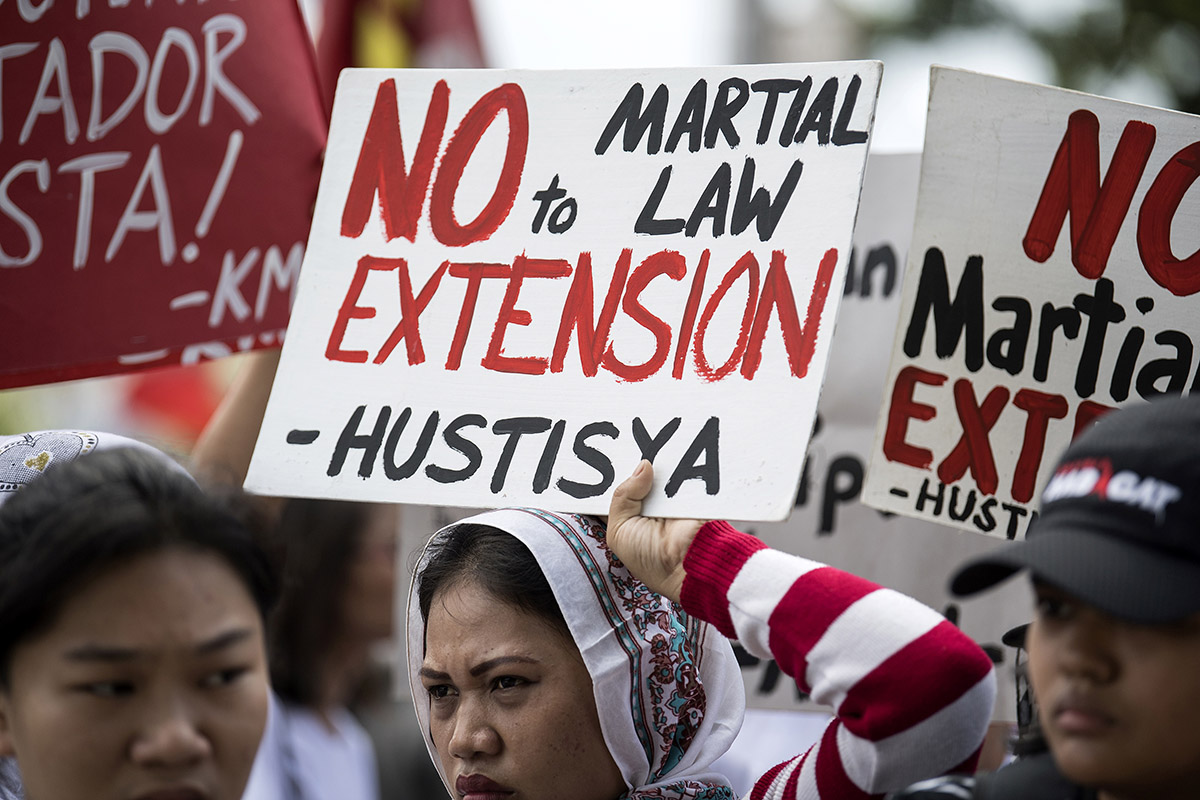In December 2017, the president of the Philippines, Rodrigo Duterte requested to extend martial law on the southern island of Mindanao for another year. Citing the need to fight Islamist terrorists and communists, martial law would need to be extended until the end of 2018.
“There is a need for me to come up with something, otherwise Mindanao will blow apart,” Duterte told the media then.
Duterte’s decision to extend martial law has been met with a fierce backlash, with many claiming this could be a pathway to a dictatorship.
The Philippines has had a dark past when it comes to martial law. During the Marcos administration, martial law was declared in 1972 amid growing unrest and the threat of a communist insurgency. Martial law was in place for almost 10 years, ending with the People Power revolution in the Philippines. Martial law under President Marcos was marred with various abuses, ranging from torture methods employed by the army, extrajudicial killings and the arrests of journalists.
The extension by Duterte makes this the longest period of martial law since the Marcos administration.
Duterte claimed that the extension of martial law was essential in combating radical Islamic insurgents and communists. Marawi was under siege last year by a coalition of Islamic State (IS) militants which resulted in over 47 civilian casualties and 1.1 million civilians displaced.
According to the Philippines’ security forces, over 185 fighters are still at large. Besides that, the threat of armed communist insurgency is back on the table for the Philippines after failed peace talks in 2017. The coalition consisting of the Communist Party of the Philippines and the National Democratic Front of the Philippines have been waging an armed insurgency for the past 50 years.
People have claimed that the increased military presence in the area following martial law has led to abuses by the military. Among the allegations made is that the military has been looting the remains of the siege. There are also reports of locals being harassed and extorted by the armed forces and national police.

The Lumad people who are indigenous to Mindanao have also spoken out against martial law as they have been heavily targeted by the army. The Lumad people have always been accused of cooperating with communists, hence often being a target of the army. Their community has been under attack with illegal arrests, extrajudicial killings, harassments and many more. More than 44 Lumad schools have been closed last year due to intimidation by soldiers and paramilitary. Duterte even threatened to bomb Lumad schools in July last year, claiming that they were violating laws by spreading subversive ideas.
In February, the Supreme Court upheld the legality to extend martial law after a petition was filed by human rights figures in the Philippines.
While martial law is currently limited to just Mindanao, Duterte has previously suggested before that it could extend nationwide. It might seem unlikely. However, considering the unpredictability of Duterte’s behaviour, it shouldn’t be dismissed so easily.
One of the biggest fears stemming from Duterte’s extension of martial law is that he could use this to consolidate his power similar to what Marcos did. Now that Duterte has extended the 60-day martial law to a year, who’s to say that he won’t extend it for the rest of his presidency?
However, it is unlikely that Filipinos would stand for a repeat of history. Even then, the constitution would prevent such an occurrence from happening.
With the supreme court decision, it doesn’t look like martial law is going away anytime soon. What’s necessary now is to ensure that there are no abuses carried out by the military or police forces. However, with Duterte continuing to flout the law and ignoring international pressure, this could prove to be a difficult task.
